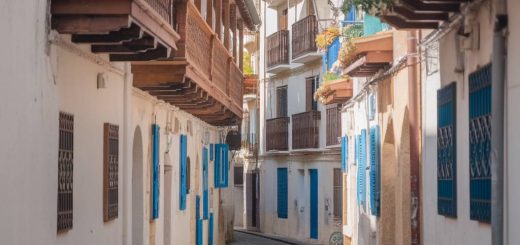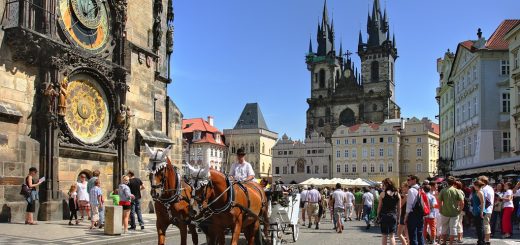The ultimate guide to exploring the fjords of Norway
Norway’s fjords are among the most breathtaking natural wonders in Europe. These ancient glacial landscapes, with their dramatic cliffs, cascading waterfalls, and serene waters, offer a unique travel experience. Whether you’re an adventure seeker or a lover of peaceful nature, the fjords of Norway have something to offer everyone.
Understanding Norway’s Fjords
Before diving into the best places to visit, it’s essential to understand what fjords are. A fjord is a long, deep, narrow body of water that reaches far inland. They are often set in U-shaped valleys with steep cliffs or slopes on either side, formed by the action of glaciers over thousands of years. The Norwegian fjords, in particular, are renowned for their stunning beauty and dramatic landscapes.
Top Fjords to Explore
Geirangerfjord
Geirangerfjord, a UNESCO World Heritage site, is one of Norway’s most famous fjords. Located in the southwestern part of the country, this fjord is renowned for its stunning waterfalls, including the Seven Sisters, the Suitor, and the Bridal Veil. The village of Geiranger is a frequent starting point for fjord adventures and offers various activities like fjord cruises, kayaking, and hiking.
Nærøyfjord
Nærøyfjord, another UNESCO World Heritage site, is a branch of the larger Sognefjord. It is one of the narrowest fjords in Europe, with its width ranging from just 250 meters to around 1,800 meters. The flanking mountains rise steeply from the water, creating a dramatic landscape. Visitors often embark on boat tours or take part in fjord safaris to fully appreciate its beauty.
Sognefjord
Sognefjord, the longest and deepest fjord in Norway, stretches over 200 kilometers inland. Known as the « King of the Fjords, » this fjord offers a range of activities, from scenic river cruises to hiking the trails of the Jotunheimen and Jostedalsbreen National Parks. When visiting Sognefjord, don’t miss the Flåm Railway, considered one of the most beautiful train journeys in the world.
Hardangerfjord
Hardangerfjord, located in the southwestern part of Norway, is famous for its blossoming fruit trees in the spring and summer. Often referred to as the « Garden of Norway, » it is the second longest fjord in the country. The region is perfect for fruit-picking, cycling, and hiking. Trolltunga, a cliff that juts out 700 meters above Lake Ringedalsvatnet, provides one of the most iconic hiking experiences in the area.
How to Get Around
Transportation in Norway is efficient and well-developed, making it relatively easy to explore the fjords. Here are some options:
- Fjord Cruises: Many companies offer fjord cruises, ranging from short two-hour trips to extensive multi-day journeys. These cruises provide an up-close view of the fjords and often include guided tours.
- Public Ferries: Public ferries are a budget-friendly option for traversing the fjords. They operate frequently and are integrated with Norway’s bus and train services.
- Car Rentals: Renting a car gives you the freedom to explore at your own pace. The Norwegian Tourist Routes, especially the Atlantic Road and the Sognefjell Road, offer some of the most scenic drives in the country.
- Trains: The Norwegian railway network connects many of the major cities and fjord regions. The Bergen Line is particularly noteworthy, offering stunning views from Oslo to Bergen.
Best Time to Visit
The optimal time to explore Norway’s fjords is between late spring and early autumn. During this period, the weather is relatively mild, and most tourist services are available.
- Spring (May-June): This is a beautiful time to visit with blossoming flowers, especially in the Hardangerfjord region. The waterfalls are at their most powerful due to the melting snow.
- Summer (July-August): The summer months are ideal for outdoor activities like hiking, kayaking, and cycling. These are also the warmest months, making them perfect for enjoying the fjords’ natural beauty.
- Autumn (September-October): Autumn offers a quieter experience as the tourist season winds down. The fall foliage adds a beautiful contrast to the fjords’ scenery.
Outdoor Activities
Hiking
Norway is a paradise for hikers, with numerous trails catering to different skill levels. Some of the most popular hikes include:
- Preikestolen (Pulpit Rock): This iconic cliff rises 604 meters above Lysefjord and offers sweeping views of the surrounding landscape. The hike is moderately challenging and takes about 4-5 hours round trip.
- Trolltunga: One of the most famous hikes in Norway, Trolltunga offers spectacular views from a cliff that juts out 700 meters above Lake Ringedalsvatnet. The hike is challenging and takes around 10-12 hours round trip.
- Romsdalseggen Ridge: Offering panoramic views over Romsdalen, this hike is best for experienced hikers. The ridge walk provides stunning vistas and takes around 6-8 hours to complete.
Kayaking
Kayaking is a fantastic way to explore the fjords up close. Many operators offer guided tours catering to both beginners and experienced paddlers. The tranquil waters and towering cliffs create a serene and immersive experience.
Wildlife Safari
Fjord safaris are a must for wildlife enthusiasts. These guided tours take you through the fjords to spot marine life such as porpoises, seals, and occasionally whales. Birdwatchers will also enjoy the variety of seabirds, including puffins and eagles.
Local Culture and Cuisine
The regions surrounding the fjords are rich in cultural heritage and offer a taste of traditional Norwegian life. Visiting these areas provides an opportunity to experience local customs, crafts, and cuisine.
Local Festivals
Throughout the year, various festivals celebrate Norwegian culture and traditions:
- Bergen International Festival: Held in late May to early June, this festival in Bergen offers a rich program of music, theater, dance, and visual arts.
- Hardanger International Cider Festival: This festival celebrates the region’s rich fruit-growing heritage with cider tastings, local food, and cultural events.
Norwegian Cuisine
The local cuisine is a must-try, especially the seafood. Some dishes to look out for include:
- Rakfisk: A traditional dish of fermented fish, usually trout, served with flatbread, potatoes, and sour cream.
- Kjøttkaker: Norwegian meatballs made from minced beef, served with boiled potatoes, gravy, and lingonberry sauce.
- Fresh seafood: Enjoy freshly caught fish, shrimp, and crabs from the fjords, often served at local markets and restaurants.
Norway’s fjords are a marvel of natural beauty, promising an unforgettable experience for any traveler. From hiking and kayaking to exploring local culture and cuisine, the fjords offer a diverse range of activities and sights. Whether you’re marveling at the majesty of Geirangerfjord or cycling through the fruit orchards of Hardangerfjord, the fjords of Norway are a destination not to be missed.



